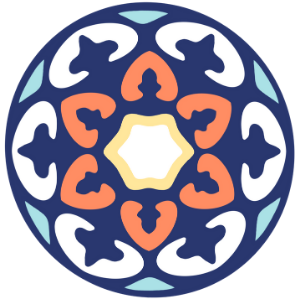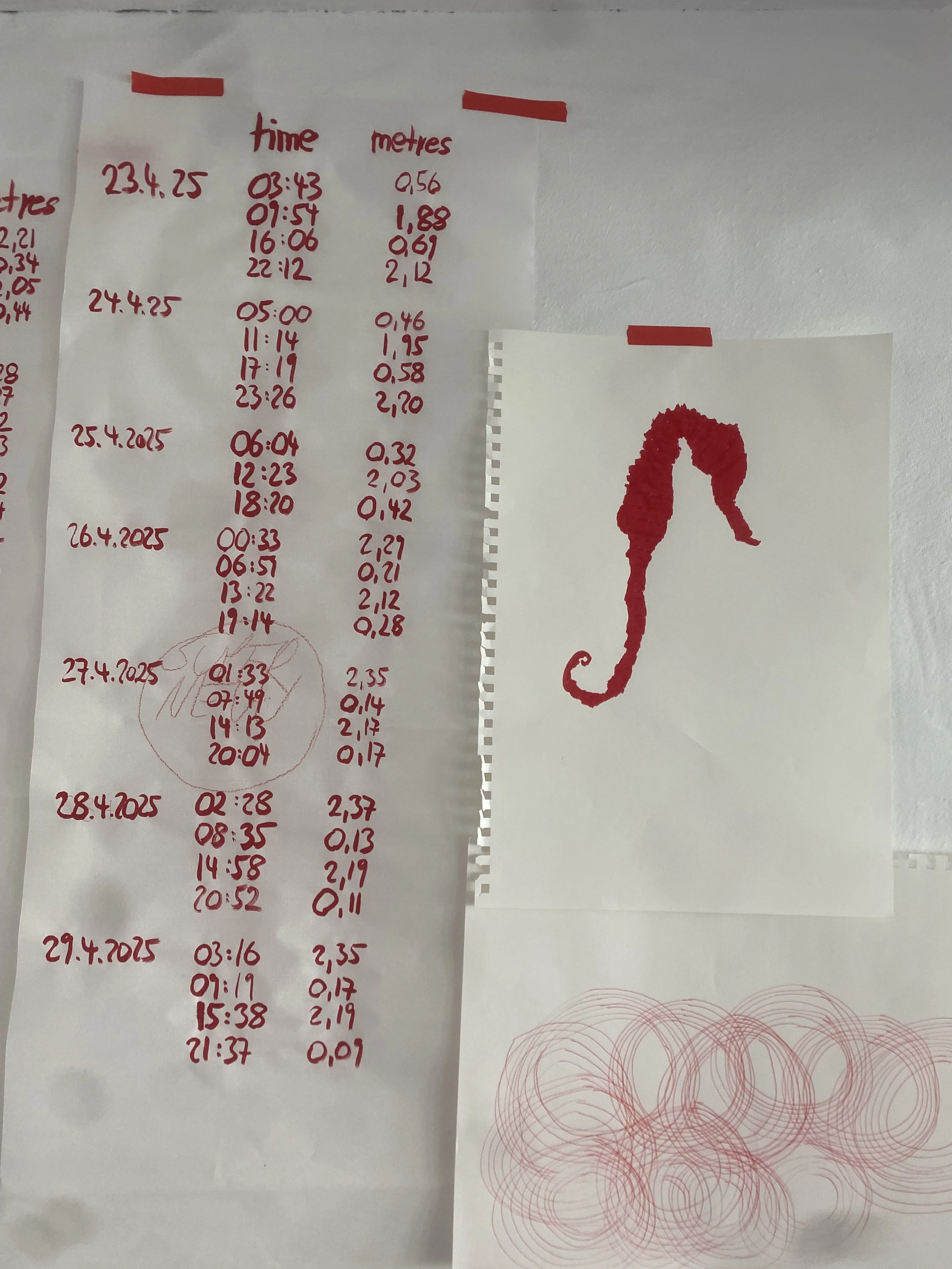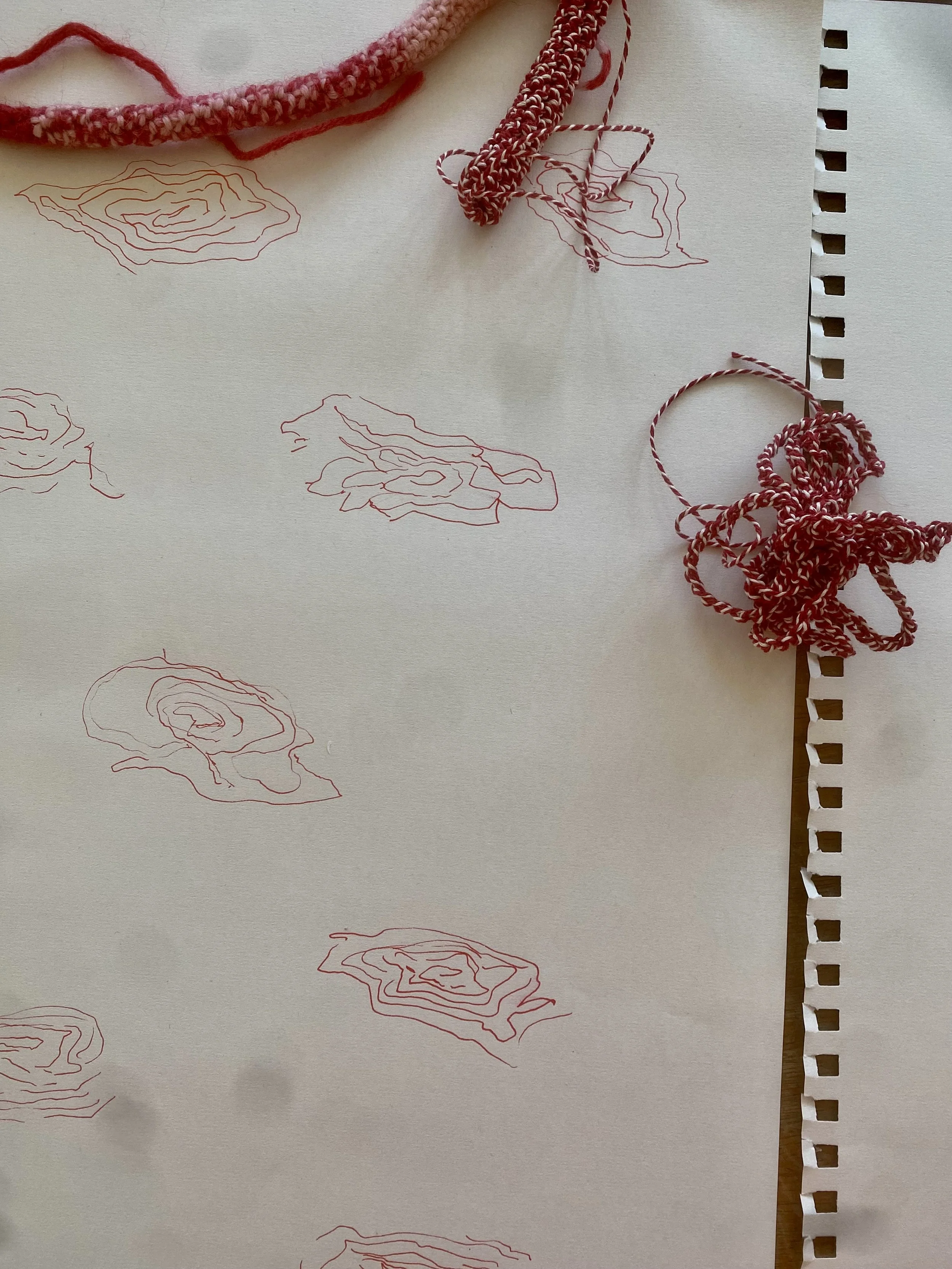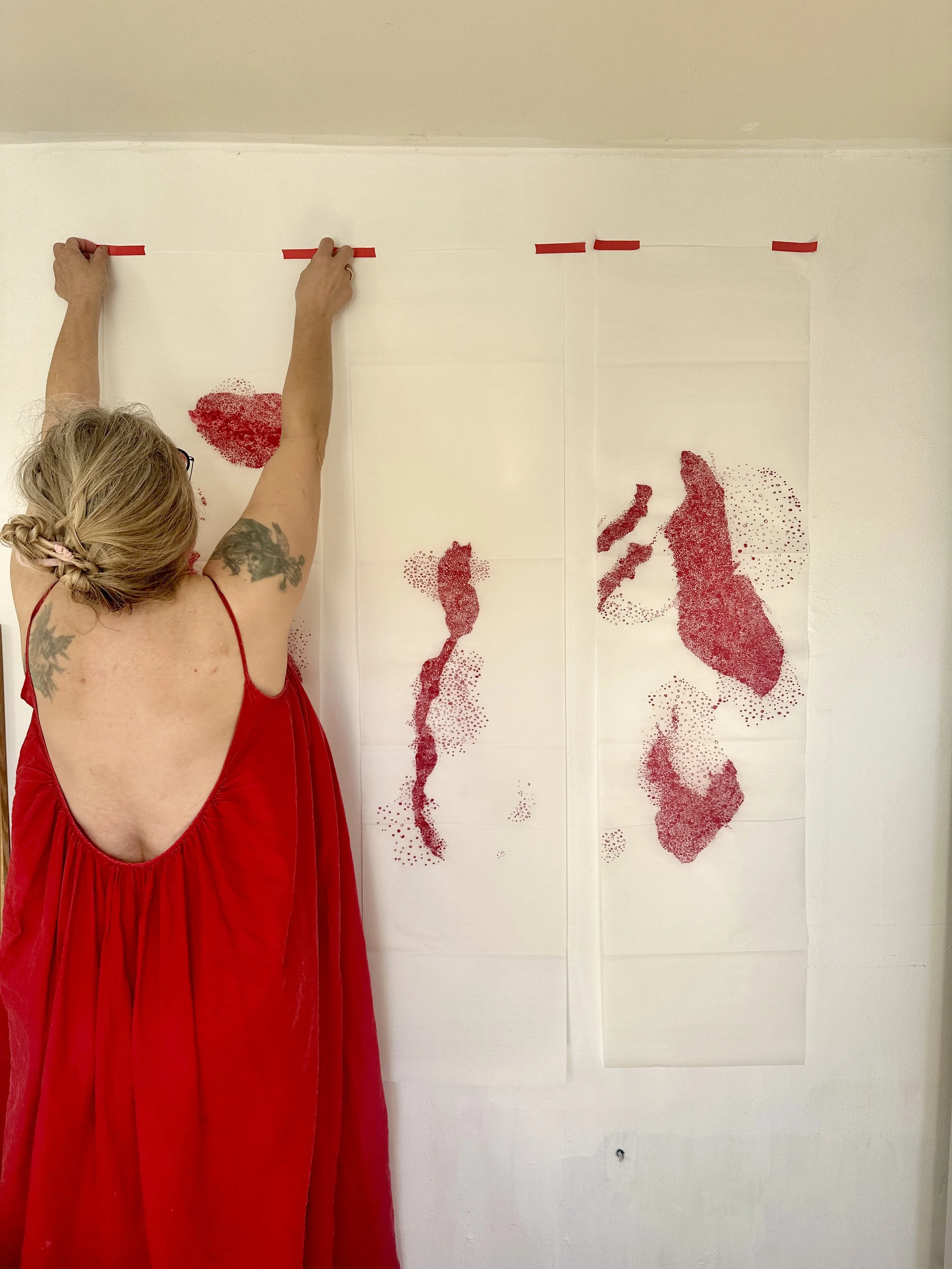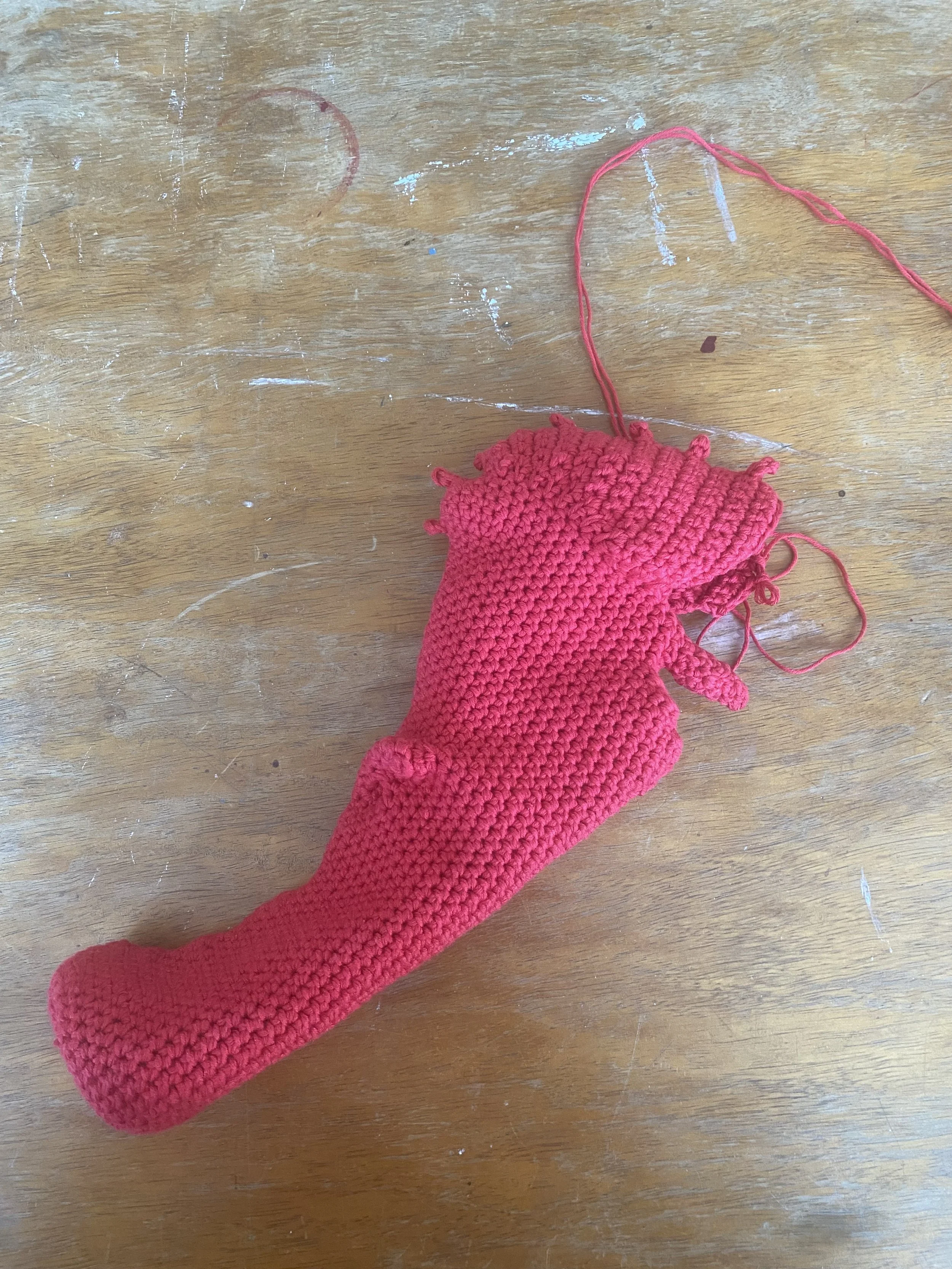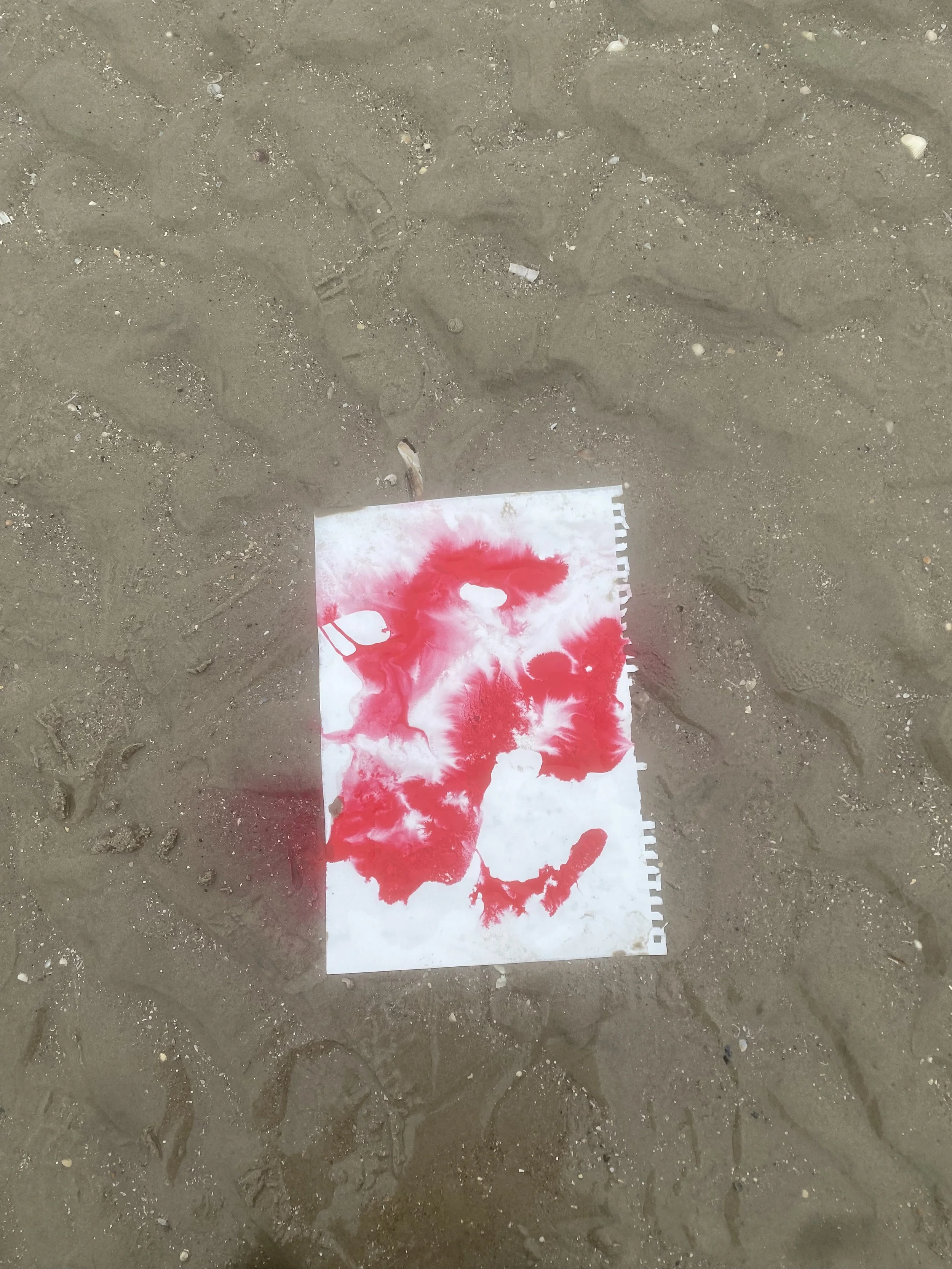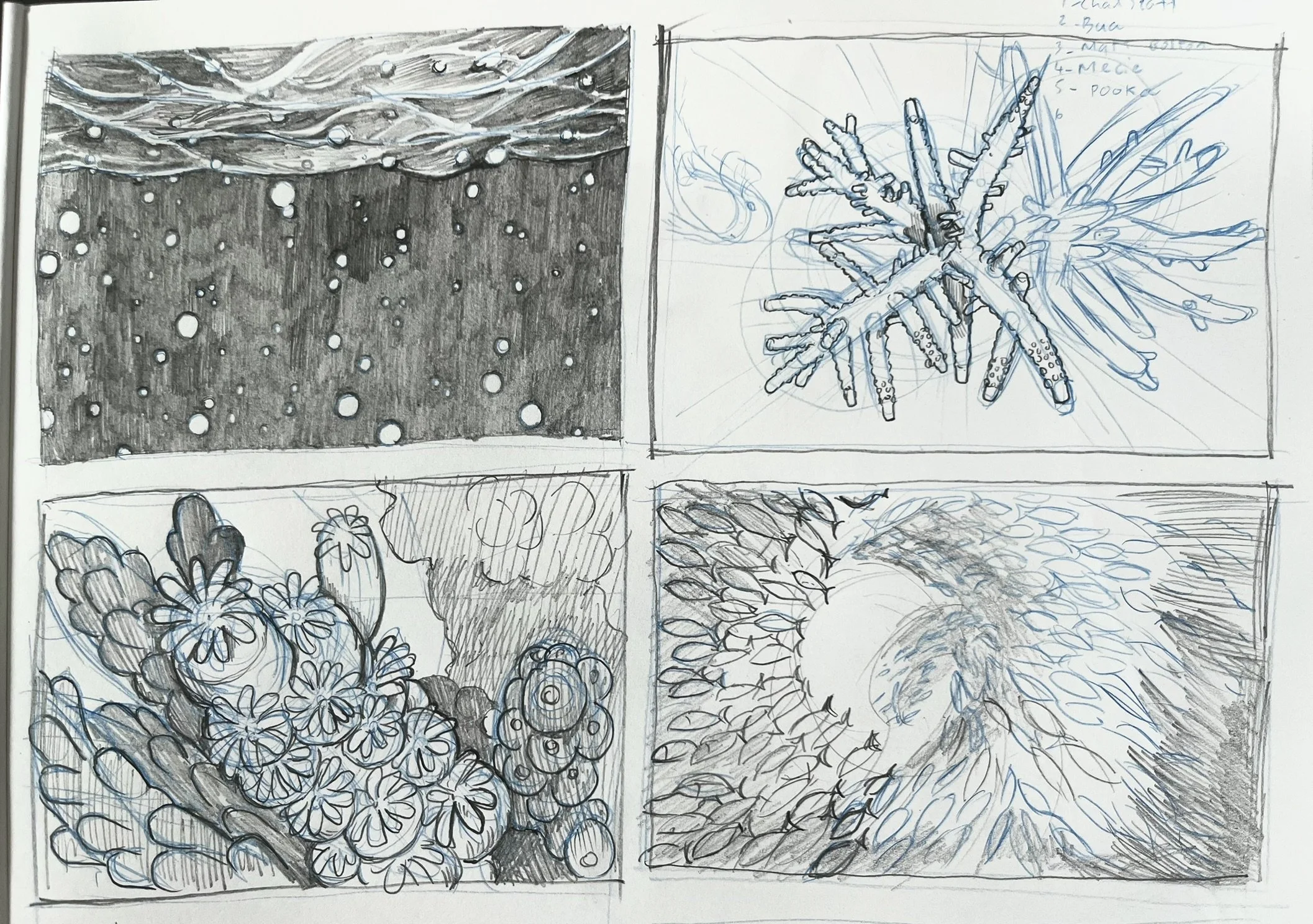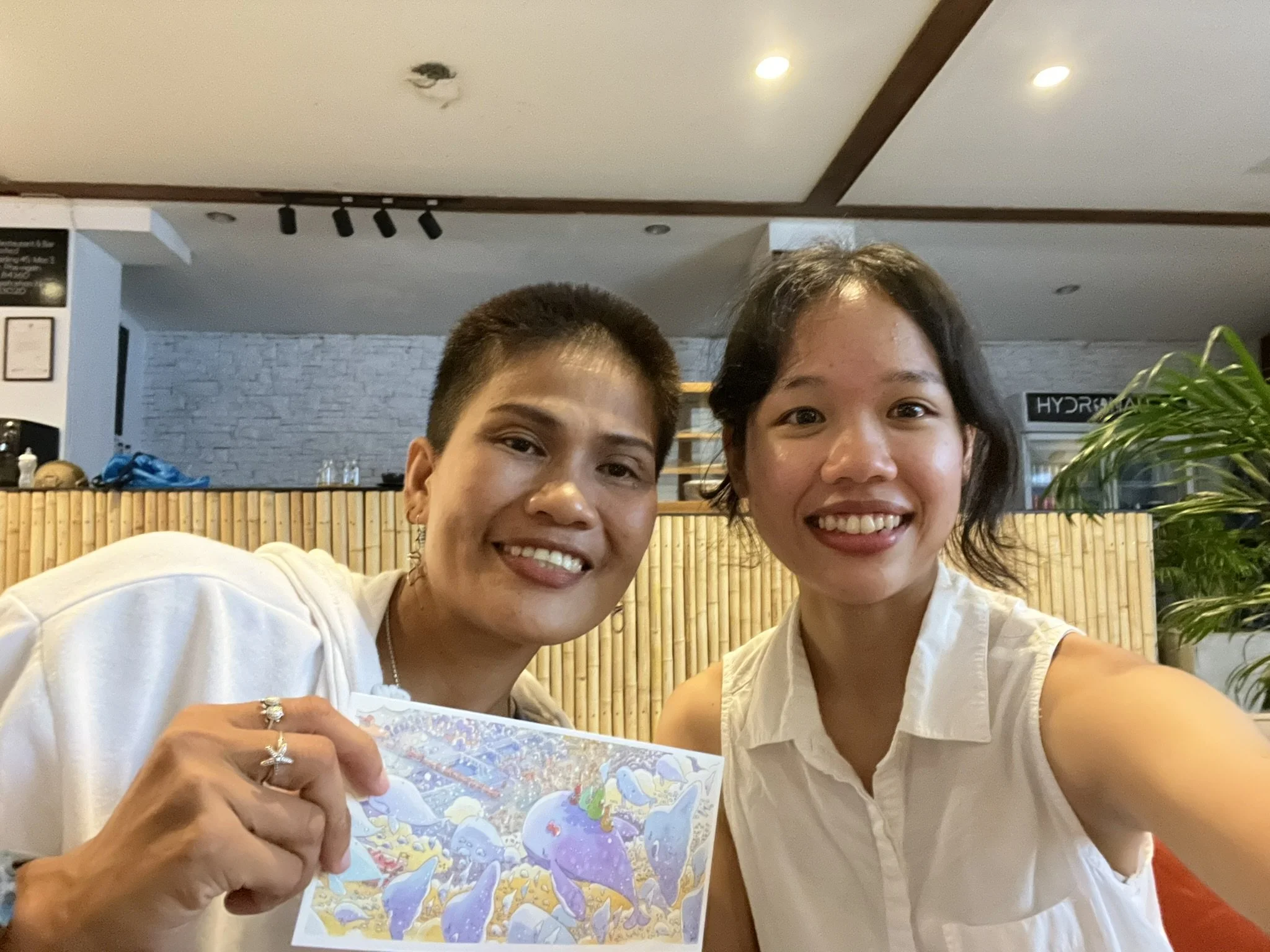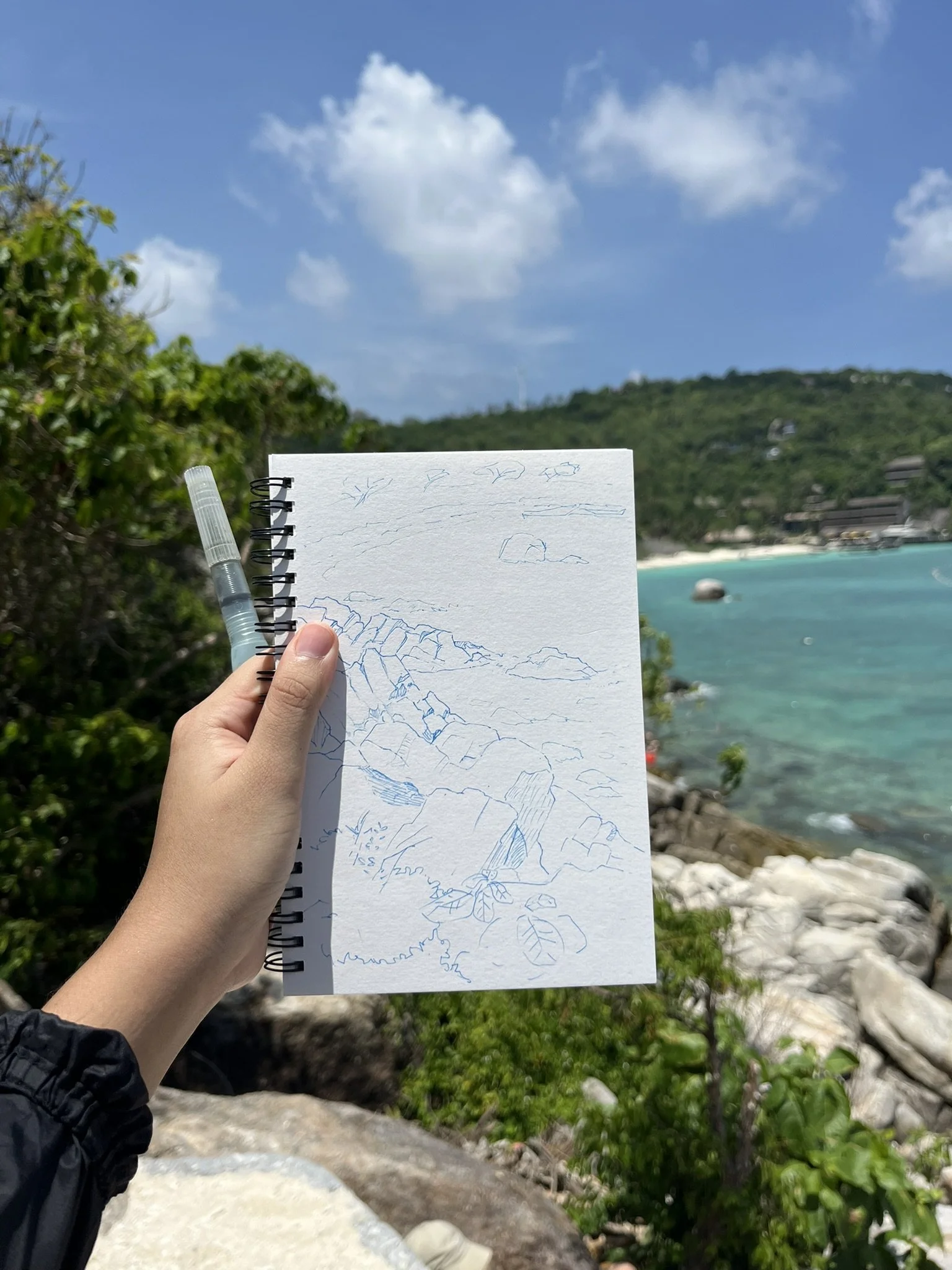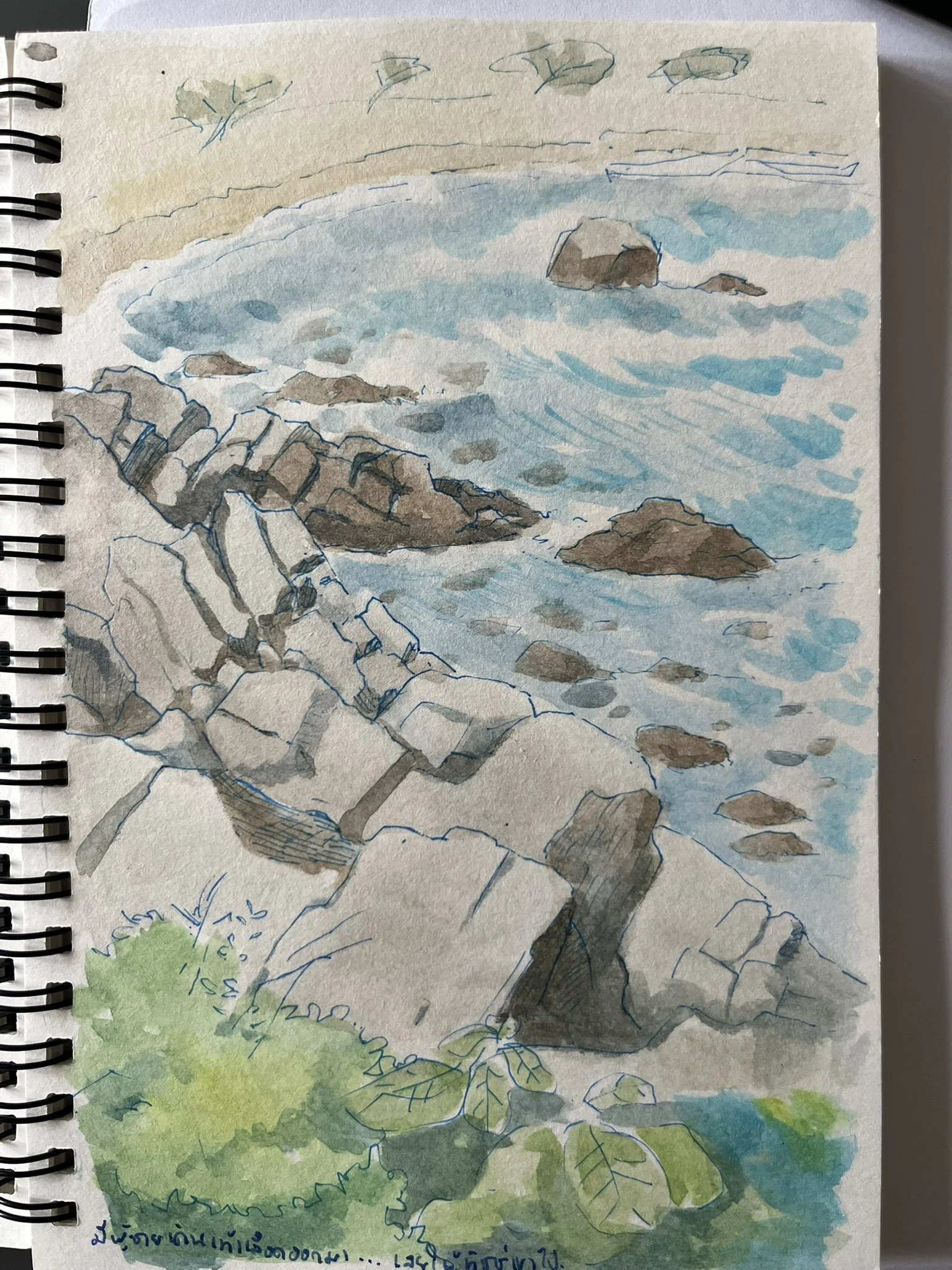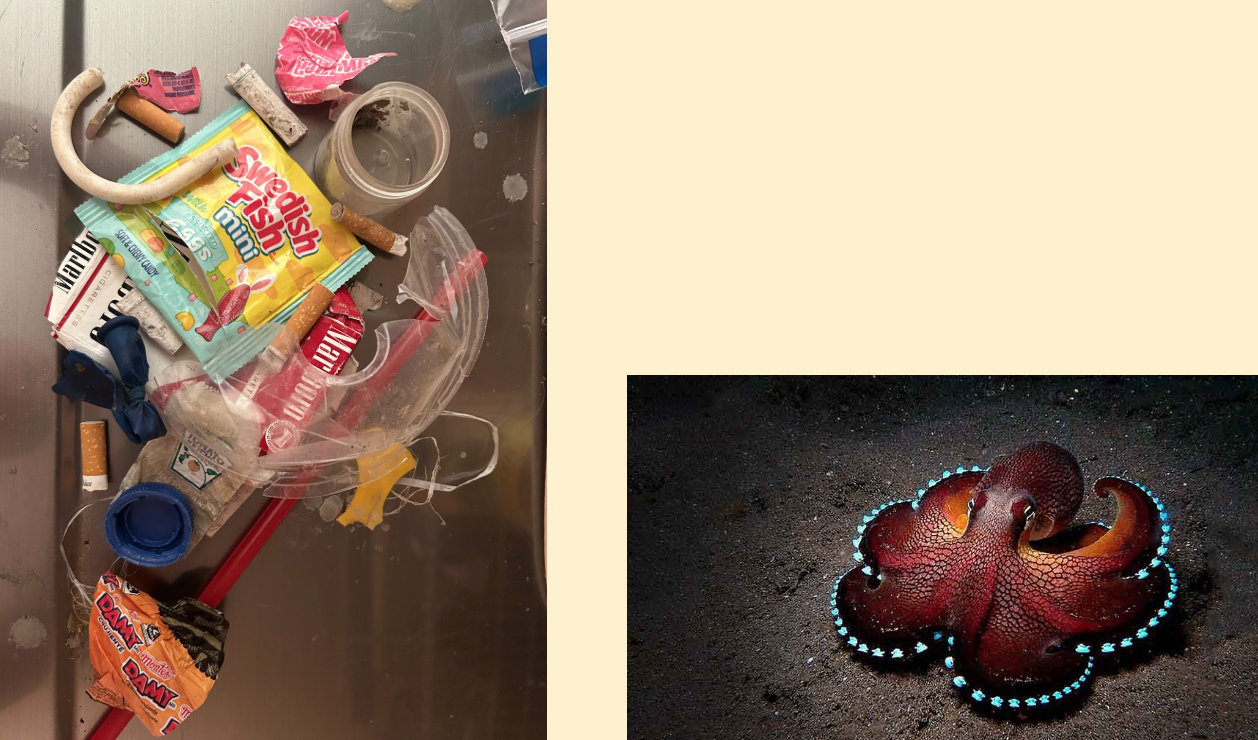Ocean II Virtual Artist Residency Recap: How Art and the Ocean Came Together
The second edition of the Ocean Virtual Artist Residency brought together nine artists from around the world to explore their personal and creative connections with the ocean. Held entirely online, the program featured five collaborative sessions where artists shared ideas, challenged each other, and developed their work in meaningful new directions. A guest science speaker joined the residency to offer insights into ocean conservation, sparking thoughtful conversations and deeper engagement.
The program culminated in a virtual Open Studio and Exhibition, where the artists shared their final pieces with the public. In this behind-the-scenes look, we’re reflecting on the creative sparks, challenges, and stories that made Ocean II so memorable, and how art continues to be a powerful call to action for our oceans.
Our Guest Speaker
Our guest speaker for Ocean II was Dr. Jesse Gwinn, a marine scientist currently working with NOAA, who focuses on global ocean and climate monitoring, seafloor mapping, and deep-sea exploration. She also manages a national internship program that provides undergraduate and graduate students with hands-on experience in ocean science and exploration. Her insights brought a valuable scientific perspective to the Ocean II Virtual Artist Residency. Having Dr. Gwinn was wonderful because she is also a crocheter and shared with us her Bathymetry Blanket.
The Artists
Ocean II brought together nine international artists from the United States, Thailand, Australia, the UK, and Denmark. After five engaging and collaborative virtual sessions, the residency culminated in a public Open Studio and the unveiling of a Virtual Exhibition showcasing the powerful works created during the program.
This year’s group of artists was truly special. A shared interest in diving emerged as an unexpected thread connecting many of them, whether they were certified instructors, had previous diving experience, or were simply curious about trying it. One artist even took the bold step of diving for the very first time during the residency, incorporating that transformative experience directly into her project. This sense of personal exploration and connection to the ocean was at the heart of Ocean II, enriching the creative journey for everyone involved.
We asked the artists to share their experiences of the Ocean Virtual Artist Residency, and below you’ll find their reflections along with insights into their creative processes.
Sophie Constable - Australia
Sophie Constable, based in Australia, works in textile and digital art, stitching and weaving together diverse materiality to bring human historical narratives and the natural world together in vivid colors, organic lines, and interwoven textures.
“I like to work with fibre and textiles, both in the real world and through digital quilting, after seeing Bisa Butler’s works. Digitally, I work with photos, digitally reconstructing them with fabric. I tend to use kimono fabric, choosing colours and textures related to each person whose portrait I’m creating. I have about 200 fabric images so far. I love the intense colours in the silk and the variety of textures.
First step though is gathering the photos. For the series I worked on in the Ocean Residency, each work has three components: a human, a marine organism and a water ripple – I like visualising ways that humans connect with the ecosystems around them: those close by and those not so close. Being a scuba diver, I have a collection of underwater photos and my dad Philip also lets me borrow his. With Adi’s portrait, I went to the beach and gathered seaweeds for pressing. I also took photos of waves, reflections, ripples and colours in that shore environment to sample later. Then I need to mix and match the water, human and marine organism elements to see what is talking nicely with each other. Once I have a sense of the shapes that are working together, I’ll conduct a quick first draft. Because I use about 100 layers of fabric per image, digitally combined in different ways, it’s important that I don’t have to start over too many times, so mock ups really help. Then I’ll go through about 50 drafts per image, looking at different colour and textures. I like to do this in conversation with the portrait sitter to get their input and feedback along the way. Sometimes that’s a challenge, but it helps me learn more about the sitter and broaden my perspective.
Bring part of the residency for this process also enabled me to get feedback from other artists which is always helpful. The time zones meant that the residency was in the middle of the night for me, so it kind of existed in this dream-space quite separate from my everyday life – no children or partners crashing the zoom calls for once! Everyone in our group has such different perspectives, it was fascinating to engage with everyone’s works and processes. Also, when there is agreement in such a disparate group, it helped me feel more confident my work will connect with more than just me. I hope you can explore some of the stories of connection in my series, reflect on our own connections and be inspired to share them whether through a message or through participating in an upcoming residency.”
Different drafts
Close up of detail
Connie Lee Lynch - Hawaii
Connie Lee Lynch, based in Hawaii, is a crochet designer, teacher, and mixed media fiber artist who finds endless inspiration in the colors, textures, and rhythms of the everyday world around her. The featured image on the blog captures a moment from Connie’s artistic process by the beach.
“I’m new to the artist residency experience and didn’t, in fact, even realize such programs existed until recently! Quite simply, I applied to the Ocean Residency because a friend recommended it. The fact that it was a virtual residency, plus I didn’t have to pay an application fee made it feel like a no brainer. Of course, I underestimated the challenge of balancing this work with remaining at home for all of the mundane tasks of everyday life! I’ve done one other residency, earlier the same year as this one, and it was away from my family. Both experiences were a challenge artistically, under time constraints, and in some ways just as exhausting as they were inspiring. But they both offered their own unique challenges as well as special moments.
My favorite thing about the virtual residency experience is that I was able to share it with my family, especially my son. Yes, it was frustrating and hard sometimes to have to switch off and out of creative mode into school pick up/family dinner/grocery shopping mode! But I also got their help in taking pictures and videos. They got to see deeper into the process of my work because I didn’t have enough time to only do it when they were gone for school and work!
So it builds a very different sort of memory for them, I think. And I’m thankful for that.
My biggest challenge was, probably not surprisingly, time. Isn’t it for us all, though! I knew I needed to hit the ground running and make as much progress as quickly as possible so I could get the information I needed to order the custom size wooden panels that my final pieces would be mounted to. And then I had to hope they arrived on time safely, too! (They actually arrived early.) Beyond that it was just balancing my time between the work and home life responsibilities. And trying to get enough sleep!
One thing I’ve found with doing a time intensive project like this is that it’s really hard to switch my creative brain off and rest. It’s like it just keeps spinning! I thought that I would feel like I had a little more time and space by being in my own home, but it really didn’t work out that way. And it was still a deeply immersive and transformative experience!
Throughout the course of the program, I spent a lot of time reflecting on my own relationship with the ocean and conservation efforts. I read the book Blue Mind by Wallace J. Nichols and felt a shift in something deeper within me, something that healed some of my own fears around the water and made me see the joys of spending this time we have here in Hawaii with my son, near the ocean. He can experience the water in a different way than I did. And I don’t think I would have made that connection without being a part of this residency.
Napping after a hard working day
Speaking of connections, Frieda and Mercedes do a beautiful job of encouraging the participating artists to not just work remotely alongside one another, but to build relationships and really talk to one another. That’s my other favorite thing about the Ocean Residency. I’ve made connections here that will last a lifetime, I believe. We are, after all, each and every one of us connected by the ocean, no matter how far away we may be.”
Dagmar Radmacher - Denmark
Dagmar is a German visual artist based in Copenhagen. Radmacher focuses on dogmatic, repetitive, slow processes, often including performative aspects.
“When the tidal waters are at their lowest, it is possible to become a deep-sea explorer—in wellies and a raincoat. You can walk where fish usually swim; it feels like entering a dreamscape, a twilight zone haunted by an absent ghost: the water itself.
Somehow, the ghost of the Wadden Sea found me through a random conversation. The area was mentioned, and I immediately recognised and remembered it—the mudflats, the black sun, the funny little bubbly holes. I remembered the moon, and gravity. I recognised the potential for parallels to my own life.”
The Wadden Sea is wet, dry, and also uniquely its own. It is German, Danish, and Dutch. It speaks with the sun, the moon, and the universe. It reminded me to proudly be all that I am and all that I can be. I am German, Danish, and in my heart, a bit of a Londoner. I work with drawing, textiles, and performance. Like the Wadden Sea, I am different things all at once—perhaps not easily graspable to those who expect something definitive.
Shortly before that conversation—the reminder of the Wadden Sea—I came across the Open Call for the online residency. I saved it in my ‘to apply’ folder, a folder full of unfulfilled potential. Very few of the saved opportunities ever become applications. I had intended to apply to the Ocean residency with a project based on the Baltic Sea: a story of unexpected parallels between my father’s life and mine.
But as soon as the ghost of the Wadden Sea returned, I knew I had to focus there. And rather than simply ponder the potential, I immediately began writing my application.
It’s fantastic to have a new path to explore, along with a framework—in the form of the Ocean residency—with prompts, discussions, and deadlines. I decided to be as open, receptive, immersed, and productive as I could. The process brought out unexpected aspects of my work. I wouldn’t have produced what I did without the intensity of this research, the interactions with other artists, and the residency itself.
Another ghost made its way in: a story about horses emerged through my research on seahorses in the Wadden Sea, linking back to a long-held but unexplored piece of family history. I’ve been fascinated by this story for a long time but was unsure how to claim it in my work. It insisted on being part of this project.
I’m an introverted extrovert, and the concept of an online residency suits me perfectly. Artistic work can be both liberating and lonely, so I find the opportunity for exchange invaluable. The Ocean—as a concept—is vast and multifaceted. It was inspiring to see how other artists approached it, from the bright blue or fish-filled views to the invisible world of microplastics. I ended up in a sandworm hole, so to speak—fascinated by the patterns in sand, the bubbly holes, the constant interplay between absence and presence.
I’m still immersed in the Wadden Sea—something has washed away, something else has been left behind, and something is being nurtured. Strangely, I’ve become more at ease with all that I am.”
Apitha Thanin- Thailand
Apitha Thanin, based in Thailand, is a watercolor artist who captures magic in everyday life. Her work invites people to see the world around them in a new light, finding beauty in the ordinary.
“I stumbled across OVAR II while browsing the Art Residency website. Most residencies take place on-site, but OVAR stood out with its interactive website and world map showcasing artworks from around the globe. I thought—how cool would it be to put the Thai ocean on that map? That was the beginning of this journey.
What’s unique about this residency is that you can design your own project. I chose to travel to an island and interview local divers. Having complete creative freedom allowed me to explore not only the marine environment but also the people connected to it.
At first, I was nervous—I didn’t have much knowledge about fine art or marine life, and I felt like a complete beginner. But the residency community was incredibly supportive. The other artists helped me break down the overwhelming tasks into smaller, manageable steps. They encouraged me to try diving, and once I booked my first interview and signed up for lessons, everything began to flow naturally.
This residency helped me step out of my comfort zone. It deepened my connection with the ocean and gave me the chance to understand others who love and care for it as well. It even led me to take a diving lesson for the first time in my life.
After this experience, I want to continue exploring the relationship between art, science, and nature. This project feels like a strong and meaningful start.”
JW Lyn - United States
JW Lynn is a creative reuse and emerging visionary artist currently creating in Dallas, Texas. Her focus is creating new, upcycled art using 90% or more prefabricated materials considered to be discarded, non-functional, and/or beyond repair, revitalizing them within the art.
JW Lyn uses creative reuse, “a process and/or methodology wherein discarded materials are reutilized in a new and/or different way.” She found a discarded 3’x3’ canvas, curled like a wave on trash day pickup while walking her dog.
“Each year, billions of pounds of trash and other pollutants enter the ocean. Most marine debris comes from littering and poor waste disposal practices on land.It can also come from trash cast overboard while out at sea.” JW Lyn integrates these pollutants as marine debris in her work, highlighting a commitment to creative reuse and environmental storytelling.
Her project is composed of approximately 95% creatively reused materials, featuring 91 repurposed items, 2 natural elements, and only 3 consumables.
Elena Lipkowski - United States
Elena Lipkowski, based in the US, is a mixed-media artist who blends digital collage with hand embroidery and textile techniques. Elena’s project used parts of the Blue Mind Theory to “evoke seaside memories with the aim that people with close and personal connections to the ocean will be better and more receptive caretakers.”
Elena during her process, carefully transferring the starfish embroidery pattern onto canvas in preparation for the detailed hand-stitching to follow.
During the residency, Elena experimented with fabric and light. Although this aspect wasn’t included in the final piece, it was a valuable part of her process, as balancing the room lighting, the canvas, and the projection proved challenging.
Andrea Venson - United States
Andrea Venson is a painter, educator, and meditation guide inspired by the transformative power of the human Spirit. She lives in the United States. Rather than replicating realistic images of deep-sea animals, Andrea decided to create her own imagined creatures, inspired by the light patterns of bioluminescent life forms.
Chris Wilmott - United Kingdom
Chris Wilmott is an emerging UK artist and researcher. His practice combines painting, original writing, and handcrafted wooden books to explore themes of the human condition underwater. During the residency, Chris was particularly interested in investigating microplastics and their impact. He actively sparked conversations among the other participants, often introducing thought-provoking topics to enrich group discussions. He also extended an open invitation for others to collaborate on his project, encouraging participation if they felt comfortable.
Rose Heflin - United States
Rose Heflin Oriis, originally from rural southern Kentucky, she spent the first part of her childhood running wild and free, barefoot, in the countryside, which resulted in love of nature. During the residency, Rose focused primarily on writing but also challenged herself to create a visual body of work inspired by her poems, which you can see in the Exhibition.
Ocean II Open Studio
If you missed the Open Studio event, where the artists shared their residency experiences, spoke about their work, and discussed their creative process, you can watch the recording of the event below. You can also explore their final works in the exhibition here.
